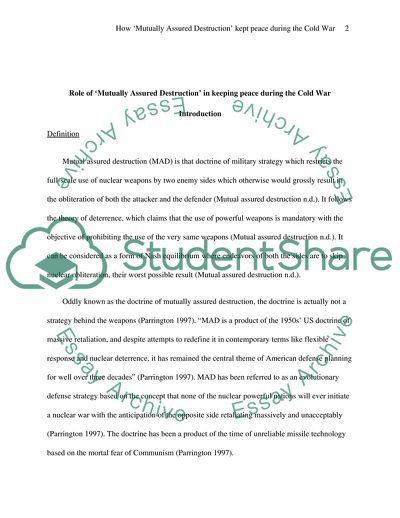Cite this document
(Role of Mutually Assured Destruction in Keeping Peace during the War Coursework, n.d.)
Role of Mutually Assured Destruction in Keeping Peace during the War Coursework. https://studentshare.org/history/1711386-do-you-agree-that-mutually-assured-destruction-kept-the-peace-during-the-cold-war-give-reasons-for-your-answer
Role of Mutually Assured Destruction in Keeping Peace during the War Coursework. https://studentshare.org/history/1711386-do-you-agree-that-mutually-assured-destruction-kept-the-peace-during-the-cold-war-give-reasons-for-your-answer
(Role of Mutually Assured Destruction in Keeping Peace During the War Coursework)
Role of Mutually Assured Destruction in Keeping Peace During the War Coursework. https://studentshare.org/history/1711386-do-you-agree-that-mutually-assured-destruction-kept-the-peace-during-the-cold-war-give-reasons-for-your-answer.
Role of Mutually Assured Destruction in Keeping Peace During the War Coursework. https://studentshare.org/history/1711386-do-you-agree-that-mutually-assured-destruction-kept-the-peace-during-the-cold-war-give-reasons-for-your-answer.
“Role of Mutually Assured Destruction in Keeping Peace During the War Coursework”. https://studentshare.org/history/1711386-do-you-agree-that-mutually-assured-destruction-kept-the-peace-during-the-cold-war-give-reasons-for-your-answer.


